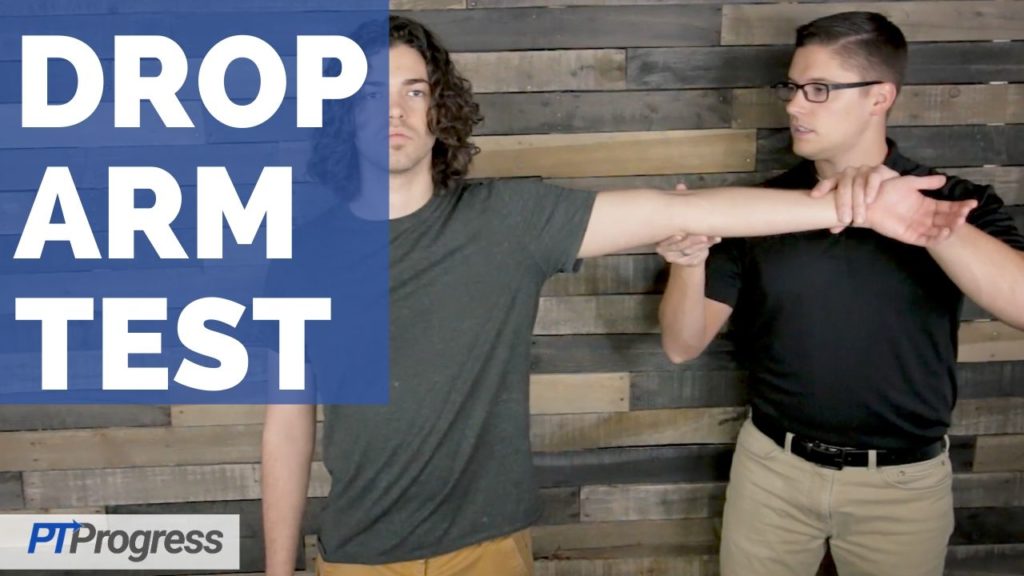
The Drop Arm test is used to help identify rotator cuff pathology, specifically supraspinatus and infraspinatus tears.
How to Perform Drop Arm Test
Position of Patient: Patient is sitting or standing with arm relaxed at side.
Performance: The examiner passively places the patient’s arm into abduction of 90 degrees. The patient is instructed to lower the arm slowly to their side in a controlled motion. The examiner may also repeat the test applying slight pressure to the arm at 90 degrees to assess for strength deficits.
How to Interpret Drop Arm Test
Positive Finding: The test is considered positive if the patient is unable to control the arm as it drops to their side, or if significant weakness is noted when the examiner places pressure on the extended arm at 90 degrees.
Test Accuracy / Reliability / Evidence:
Sensitivity and Specificity & Likelihood Ratio
Partial Thickness Rotator Cuff Tear
Sensitivity = 0.14
Specificity = 0.78
+LR = 0.60
– LR = 1.10
Full Thickness Rotator Cuff Tear
Sensitivity = 0.35
Specificity = 0.88
+LR = 2.9
– LR = 0.74
Source: Alqunaee M, Galvin R, and Fahey T: Diagnostic accuracy of clinical tests for subacromial impingement syndrome: a systematic review and meta-analysis. Arch Phys Med Rehabil 2012; 93: pp. 229-236 2012 Metaanalysis
Drop Arm Test Video
The Drop Arm test is used to help identify rotator cuff pathology, specifically supraspinatus and infraspinatus tears.
To perform the Drop Arm test, position the patient in sitting or standing with the arm relaxed at their side.
The examiner passively places the patient’s arm into abduction of 90 degrees. The patient is instructed to lower the arm slowly to their side in a controlled motion. The examiner may also repeat the test applying slight pressure to the arm at 90 degrees to assess for strength deficits.
The test is considered positive if the patient is unable to control the arm as it drops to their side, or if significant weakness is noted when the examiner places pressure on the extended arm at 90 degrees.
For more special tests, visit the shoulder special test page.

